Art that Identifies Nepal - Art of Mithila
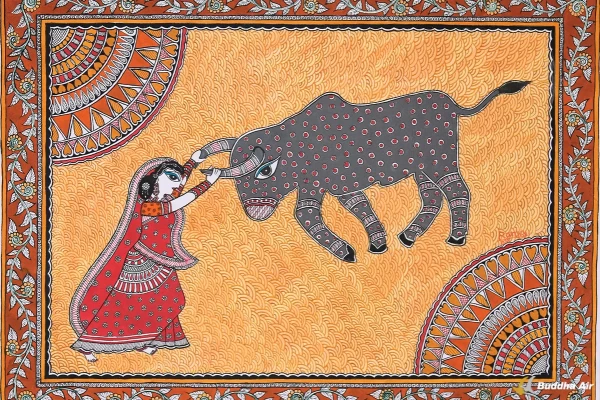
Mithila art is a folk tradition practiced in the Terai since ancient times. During festivals, women decorate the walls and floors of their houses with colorful paintings, expressing their emotions and sentiments. Such folk art is made during auspicious occasions such as festivals, weddings, and other celebrations.
Mithila art is instantly recognizable. It often depicts scenes such as the wedding of Ram and Sita, Aripan art, the story of Krishna Leela, Sun worship, the Chhath festival, Ganesh Chaturthi, and Holi, as well as objects like fish, forests, trees, peacocks, elephants, parrots, and turtles.
Over time, the subject matter and style of Mithila art have evolved. Women in villages portray their daily lives and thoughts through their paintings. Educated women have brought innovation, expressing their worldview in their artwork.
Villages have a tradition of painting themes from the Ramayana, Mahabharata, and other religious epics. I have been sharing social messages through paintings. My artworks challenge social issues like the dowry system, untouchability, feticide, and discrimination. Through art, I advocate for women's freedom and empowerment.
Previously, artists made natural colors at home. Green was derived from bean leaves, yellow from turmeric, white from rice flour, and black from the smoke of the fire pot. Cotton wrapped around bamboo skewers served as brushes, ensuring he use of entirely natural colors.
With changing times, the use of chemical colors has increased. However, I also use coffee, cow dung, and tea leaf dyes. Once confined to floors and walls, Mithila art has now expanded to paper, cloth, canvas, and pottery.
Women primarily patronize Mithila art, with only a handful of male artists. Traditionally, only women created these paintings, but as professionalism grew, men also began practicing it.
Mithila art holds great potential for income generation. Mithila-inspired handicrafts are highly sought after both in Nepal and abroad.
All three levels of government should collaborate to protect and develop Mithila art. Establishing Mithila museums and art galleries in various locations is crucial. The government must take responsibility for branding and marketing handicrafts that embody the essence of Mithila art.
Furthermore, Mithila art should be incorporated into school curricula. As a significant cultural representation of Nepal, a separate department for Mithila art should be established at the Nepal Academy of Fine Arts.
Below, I describe a few of my paintings.
1. Save the Daughter
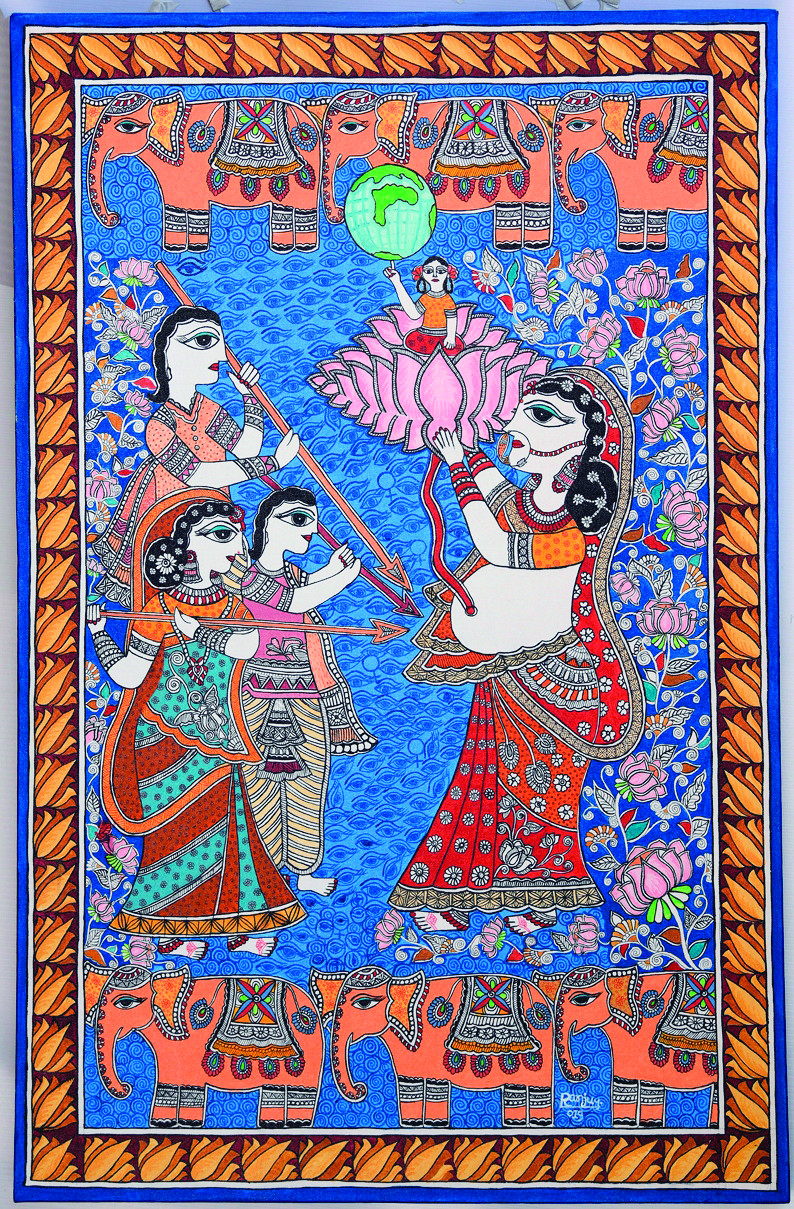
The painting portrays a pregnant woman expecting to give birth to a daughter while facing pressure from her family, who desire a son and urge her to abort. She resists, believing her daughter deserves a chance to live and thrive. The message is clear: a daughter can change the world if given an education.
2. Confronting Challenge
This painting depicts a woman fighting a bull, symbolizing women's immense strength. It illustrates that women are mentally resilient and capable of overcoming any challenge. I created this artwork in 2019.
3. Woman Breaking Cage
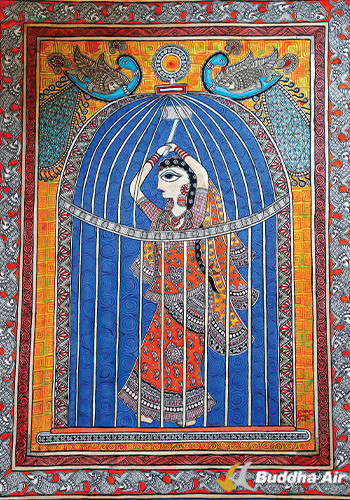
Traditionally, Nepali society has confined women to their homes, restricting their potential. This artwork represents how modern women refuse to be suppressed and are now breaking barriers to claim their rights.
4. Education
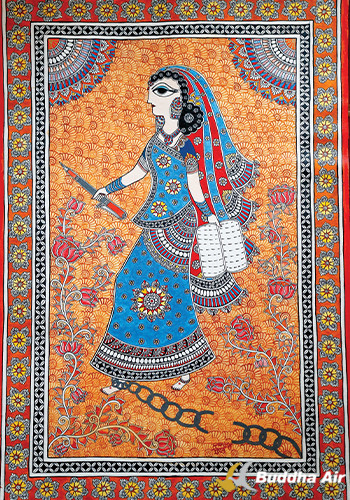
A woman holding a pen and book breaks free from chains. This painting emphasizes that educating women illuminates society, fostering progress and equality. With knowledge, women can overcome immense struggles.
5. Aripan
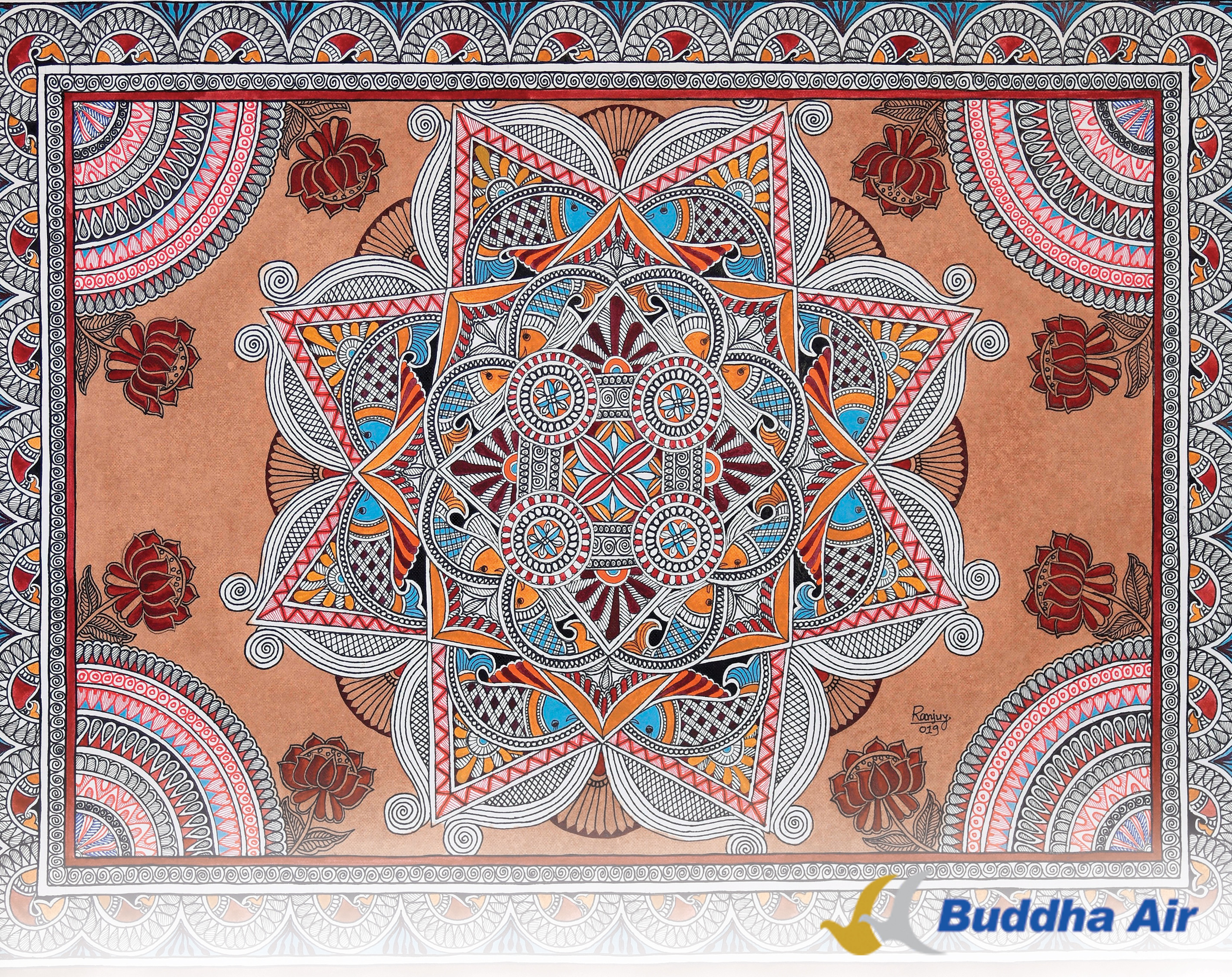
In the Terai, the eve of Bhaitika is marked by Aripan, a floor painting representing the gods of the four directions. Mustard or millet is placed in the artwork in the evening. It is believed that Yamaraj must collect all the seeds before taking anyone away, but this is not possible until the break of the day. It ensures the protection of the brother sitting on the Aripan during Bhaitika.
6. Untouchability
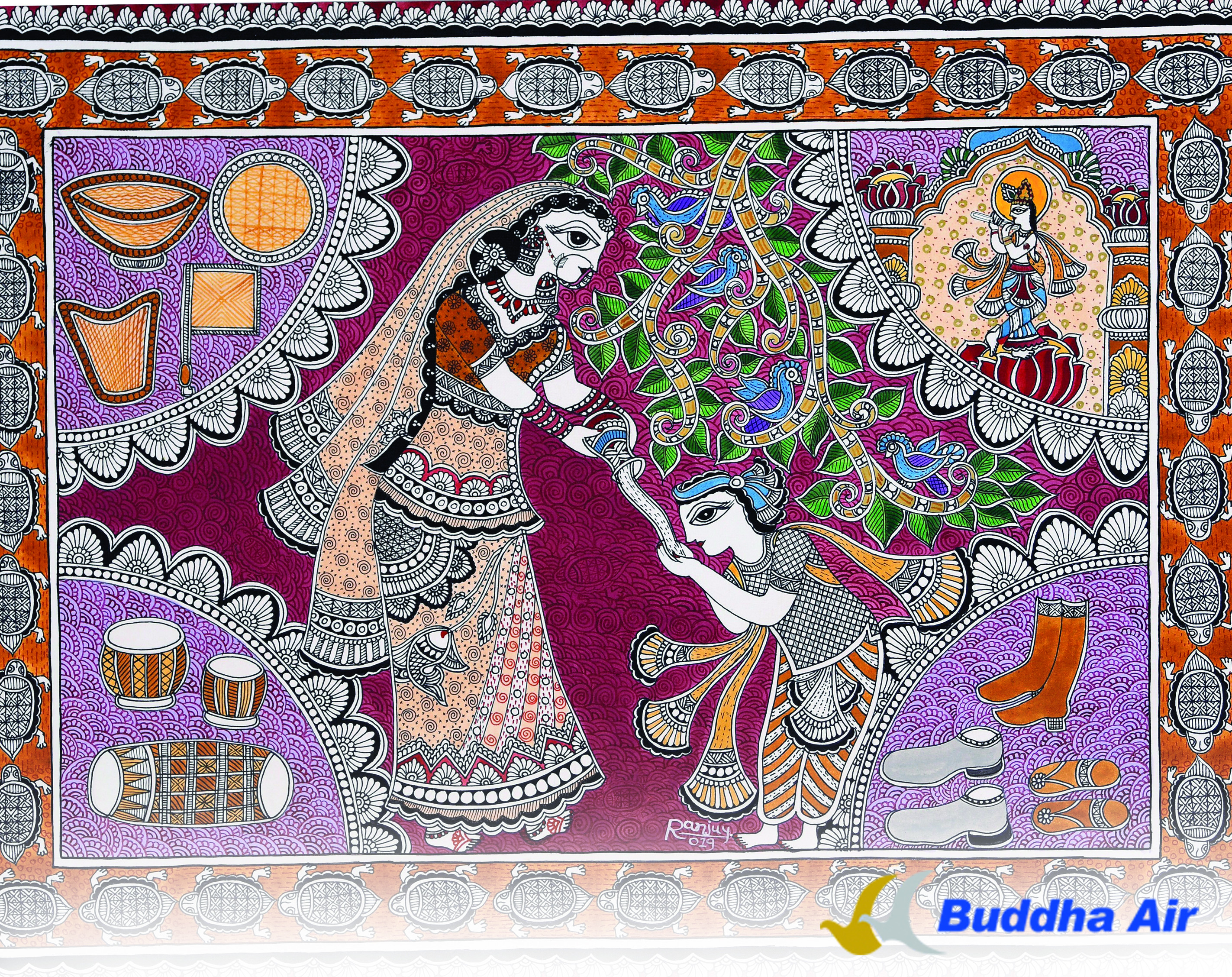
This artwork highlights the discrimination faced by the Dalit community in Nepal. Despite making idols for temples, Dalits are not allowed entry. Their labor is used, but they are denied basic rights. This painting calls for the eradication of untouchability.
7. Woman in the Driving Seat
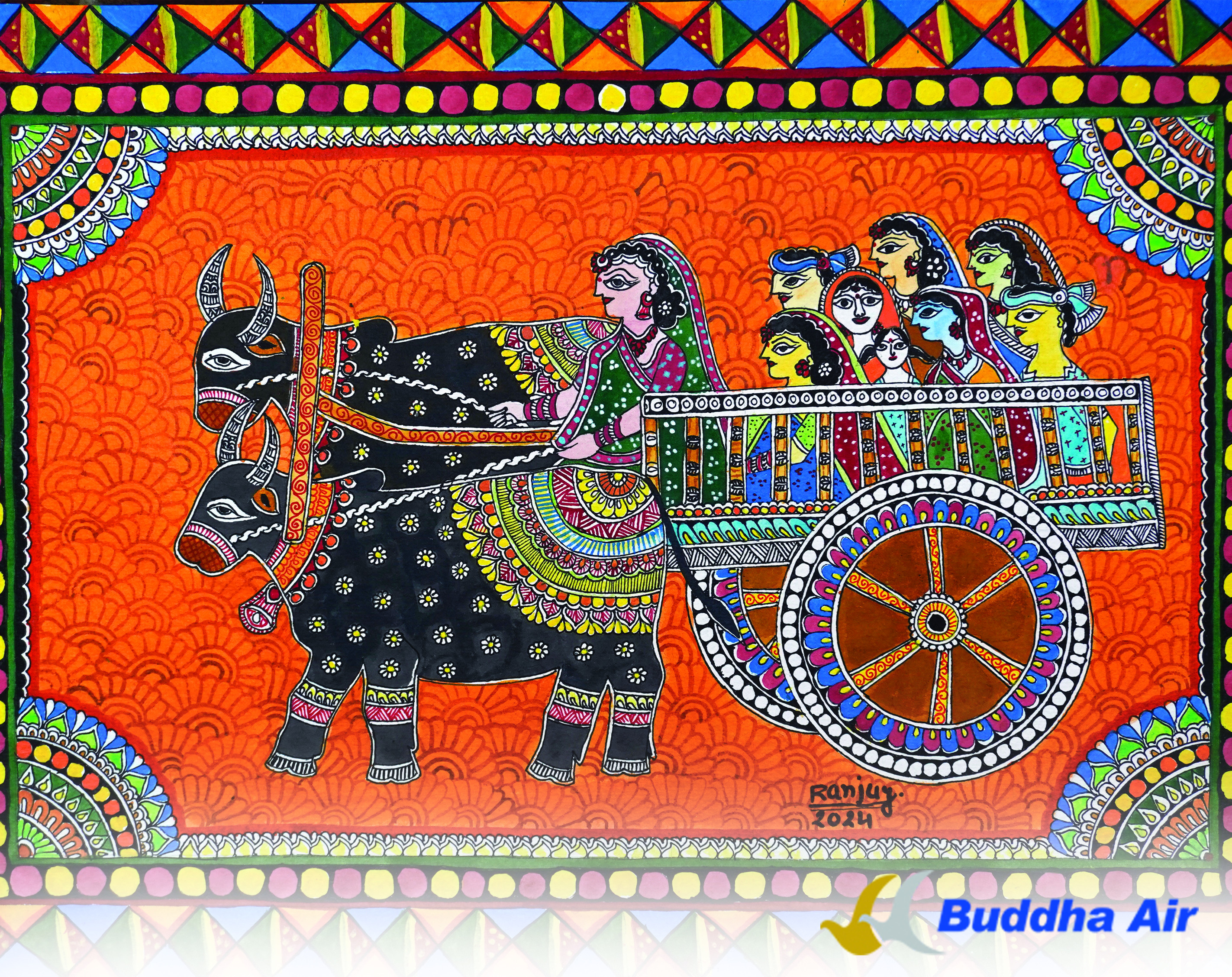
Traditionally, men drove bullock carts in the Terai. However, women have taken on these roles as men migrate for work. This painting challenges gender norms, asserting that women are equally capable of leadership.
8. Freedom
Patriarchal society has long attempted to cage women. This painting urges men to change their mindset and grant women the freedom to pursue their dreams. True societal progress depends on women's liberation.
9. Holi
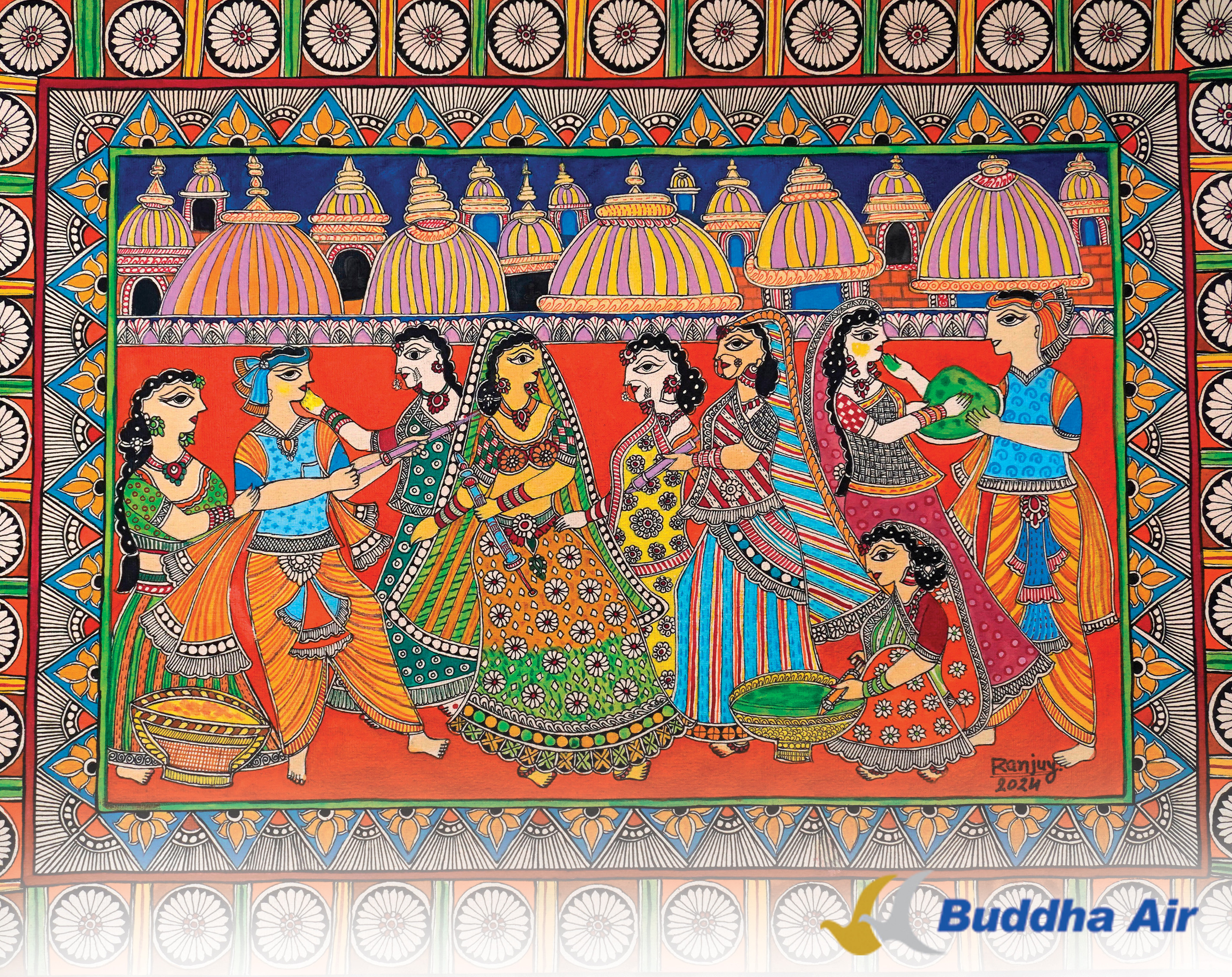
Holi is a vibrant cultural festival in the Terai, symbolizing joy and unity. It reminds us to let go of past grievances and embrace harmony, much like during the festival.
10. Disaster Tourism
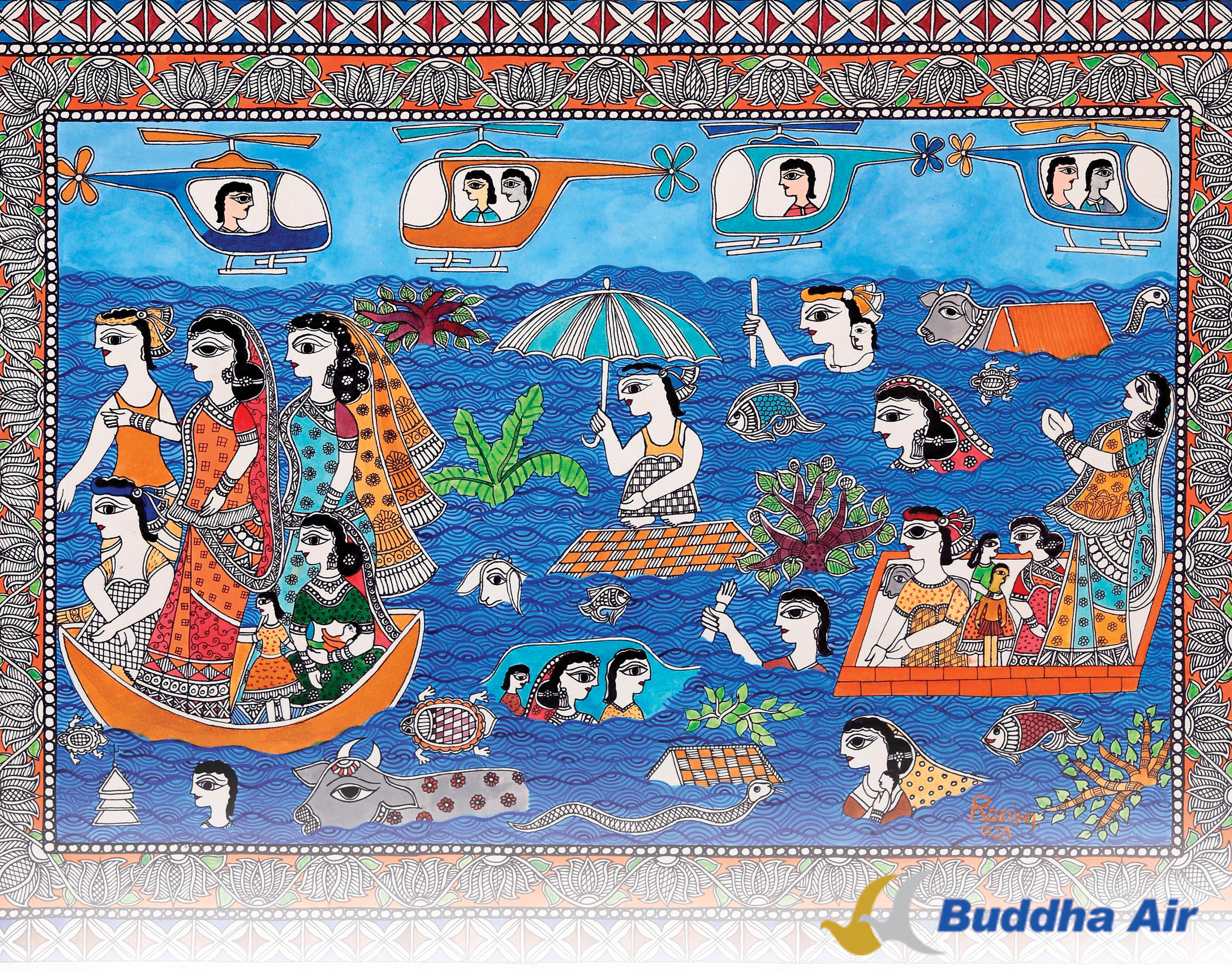
The painting portrays leaders observing disaster-stricken people from a helicopter. As floods devastate communities, politicians visit superficially without offering real aid. This artwork critiques their apathy, capturing a harsh reality. I made this artwork during the flood in the Koshi River.
Humanitarian Artist

Ranju Yadav is a rebel artist who critiques social discrimination, distortion, and disharmony through Mithila art. She is also a humanitarian artist who advocates for social justice, human rights, equality, and a just society through her artwork.
Born in Thalha, Surunga Municipality-10 of Saptari district, Ranju learned Mithila art at home during her childhood. After her father’s passing, she continued her studies under the care of her uncle and aunt in Rajbiraj. When she married journalist Amarendra Yadav, she embraced Mithila art professionally.
A turning point came when artist Ajit Sah visited her home in Kathmandu. Impressed by her work, he encouraged her to pursue art professionally. Inspired by his words, she embarked on a dedicated artistic journey a decade and a half ago. She quickly gained recognition, with her paintings earning praise in numerous exhibitions at home and abroad.
Her first solo exhibition, Colors of Change, was held in 2019. The same year, her second solo exhibition took place at the Swiss Embassy. She has actively participated in exhibitions in Nepal and many other countries.
In 2024, she conducted a 33-day European Art Tour and a Multi-National Solo Exhibition, showcasing her work in Frankfurt, Berlin, Copenhagen, and Helsinki.
Ranju also crafts Mithila-inspired handicrafts, winning hearts with her creations in clay and ceramic pottery.
Her dream is to spread Mithila art worldwide. “I will work tirelessly to engage the new generation in its appreciation,” she says. She also plans to establish a Mithila Art Museum in Rajbiraj.
With strong support from her husband Amarendra, Ranju runs Mithila Art Nepal in Kupondol, Lalitpur, where her gallery and studio are located.
Congratulations to artist Ranju Yadav for elevating Mithila art to new heights!
